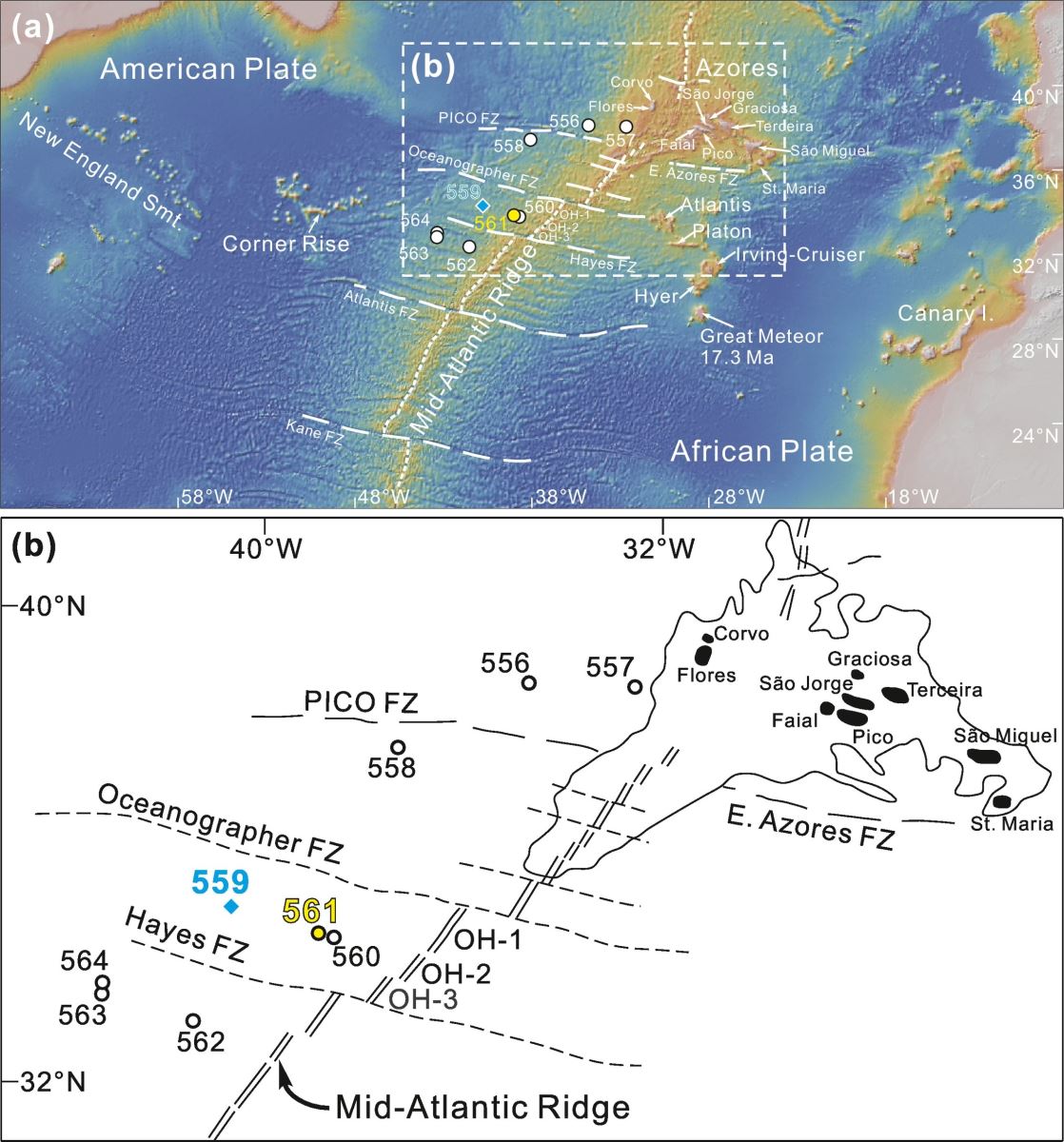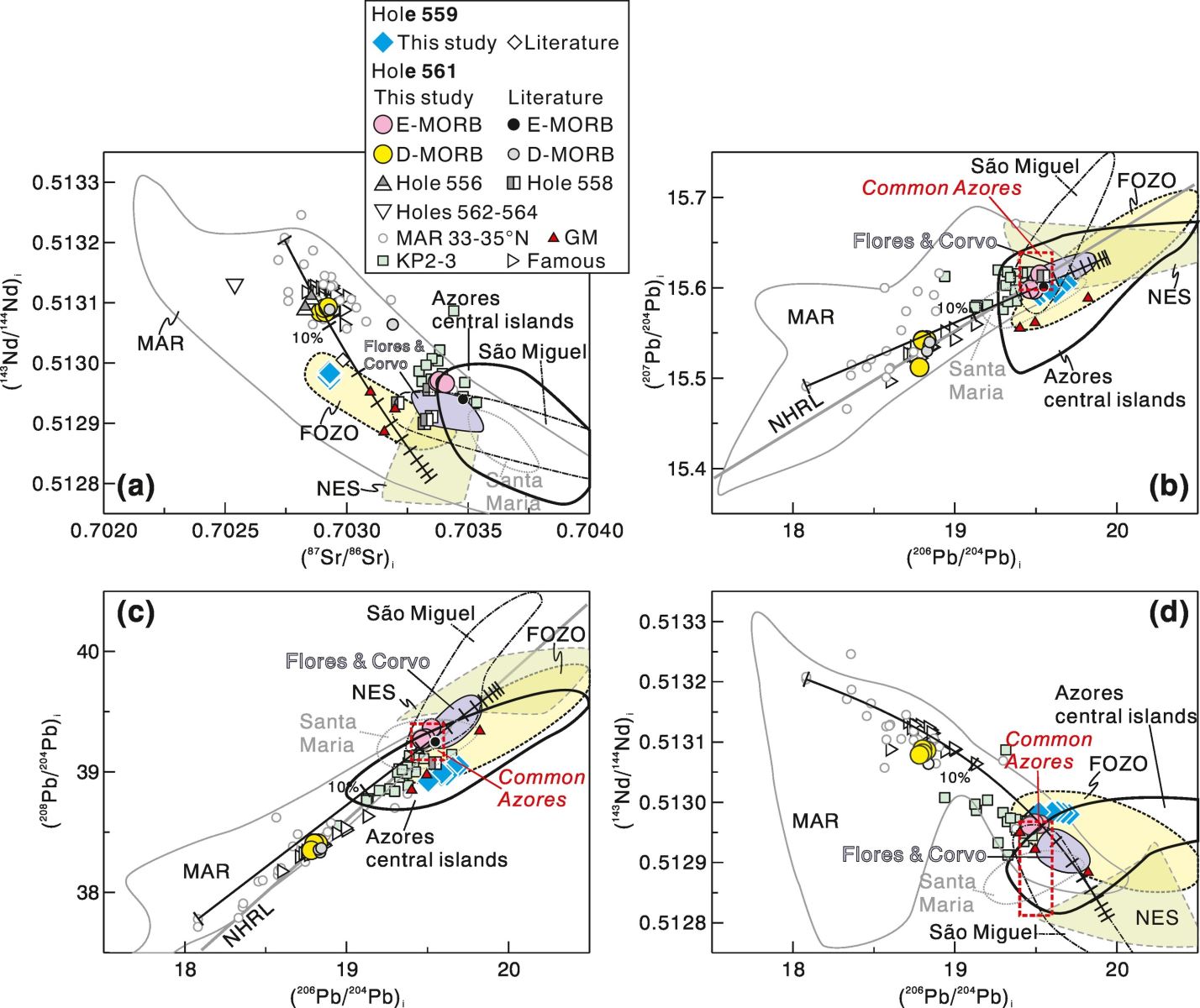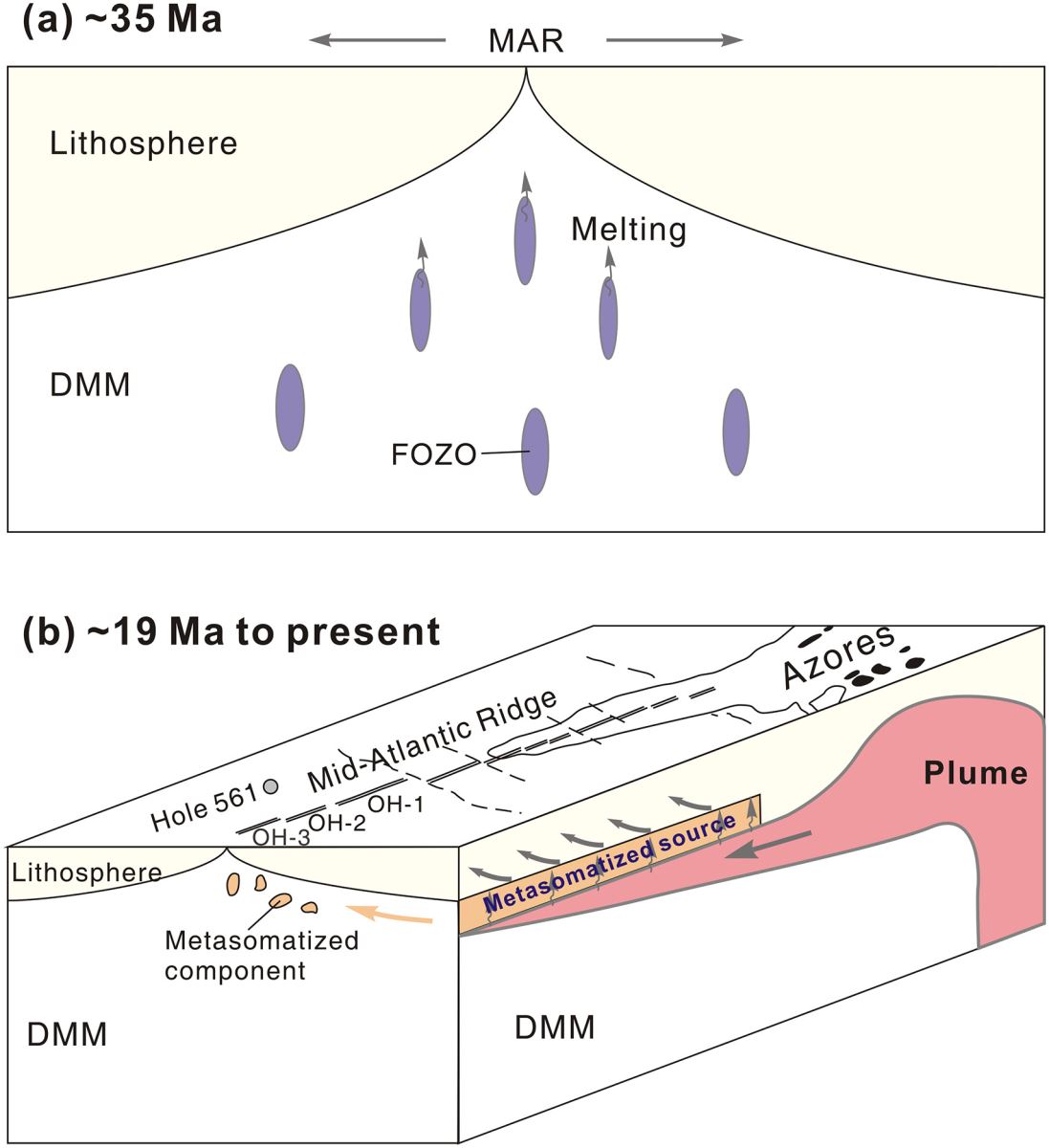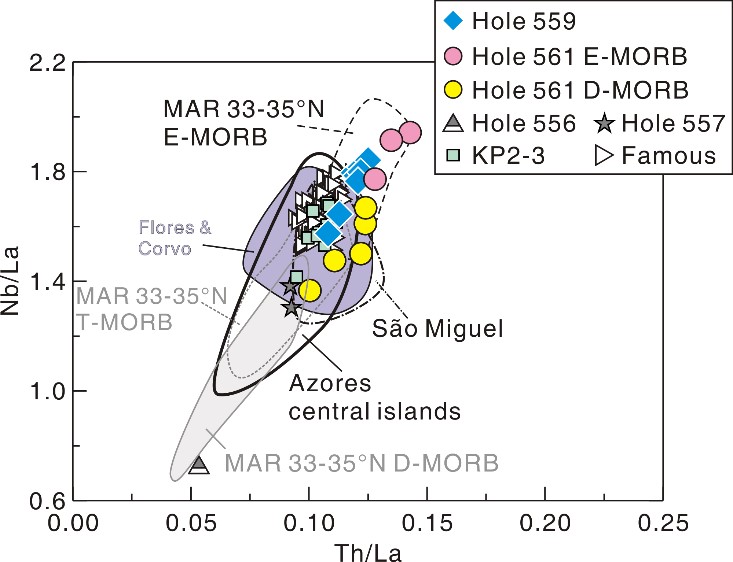
.jpg)
Enriched mid-ocean ridge basalts (E-MORBs) near hotspots are commonly ascribed to be products of mantle plume-ridge interaction, but the genesis of E-MORBs far from hotspots remains controversial. Here we report new major and trace element and Sr-Nd-Pb isotopic data for lavas from Holes 559 and 561 of Deep Sea Drilling Project (DSDP) Leg 82 that are located west of the Mid-Atlantic Ridge (MAR) midway between the Oceanographer and Hayes fracture zones (33–35°N). Our data reveal that E-MORBs from Hole 559 have high (87Sr/86Sr)i (0.70292–0.70294) and (206Pb/204Pb)i (19.504–19.692) and low (143Nd/144Nd)i (0.51297–0.51299) values, similar to the mantle focal zone (FOZO) component, that could be partly coming from the New England mantle plume. We propose that the FOZO component could be widely distributed beneath the northern portion of MAR at ~35 Ma. Hole 561 lavas contain both depleted (D-) and E-MORB. The D-MORBs have depleted Sr-Nd-Pb isotope compositions and were derived from the depleted asthenospheric mantle. Hole 561 E-MORBs have radiogenic (87Sr/86Sr)i (0.70337–0.70341), (143Nd/144Nd)i (0.51296–0.51297) and (206Pb/204Pb)i (19.463–19.525) values that are similar to the proposed common component in the mantle plume sources of lavas in all the Azores islands except for the eastern part of São Miguel. In addition, Hole 561 E-MORBs also display higher Th/La and Nb/La ratios than the most plume-influenced E-MORBs near the Azores hotspot and even the Azores lavas. These suggest that Hole 561 E-MORBs were derived from partial melting of a depleted mantle metasomatized by deep, low-degree melts of the common Azores plume component. We propose that variable amounts of such metasomatized mantle are widely distributed in the asthenospheric mantle beneath the MAR 33–35°N ridge segment since ~19 Ma and their partial melting is also probably responsible for the generation of the modern MAR 33–35°N E-MORBs.




https://doi.org/10.1016/j.chemgeo.2020.119858